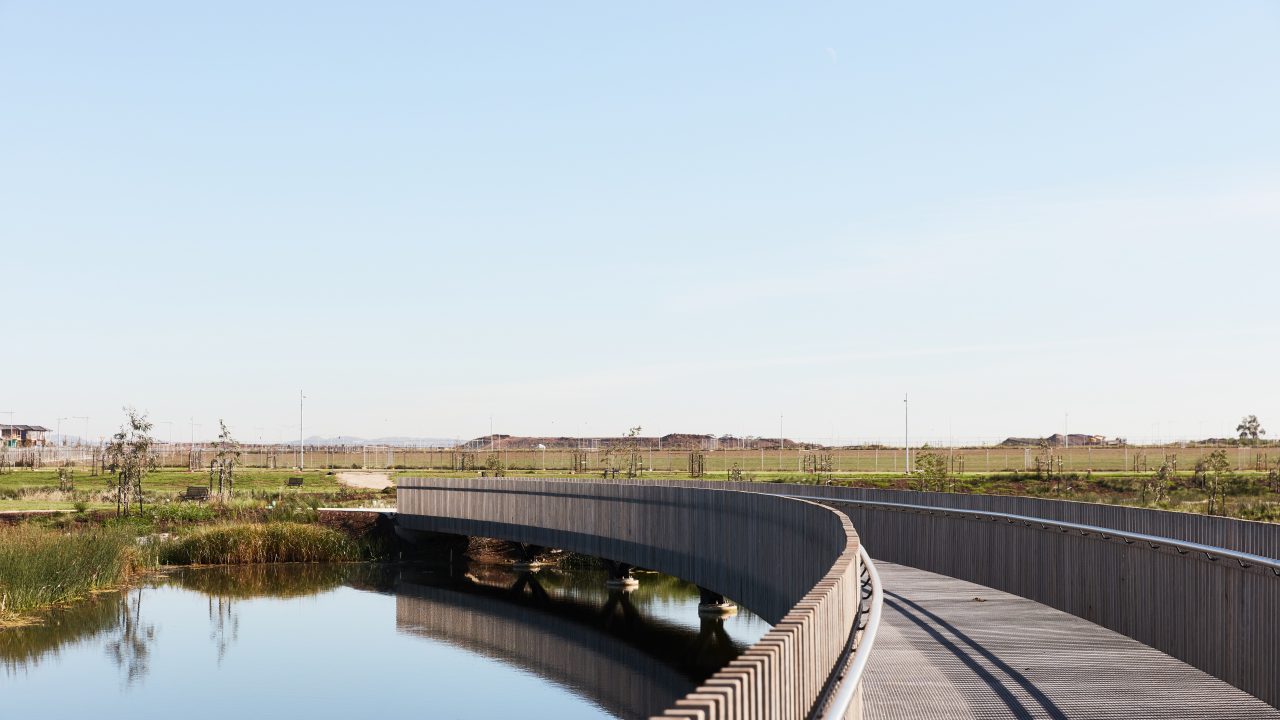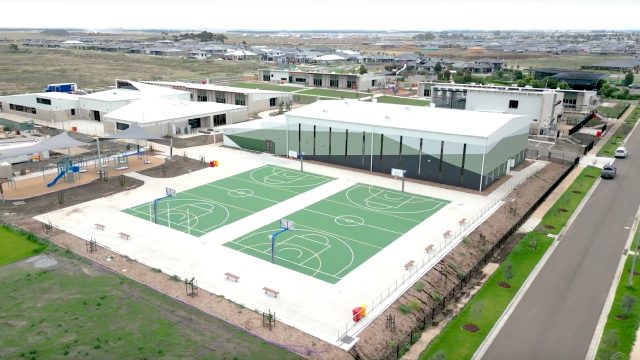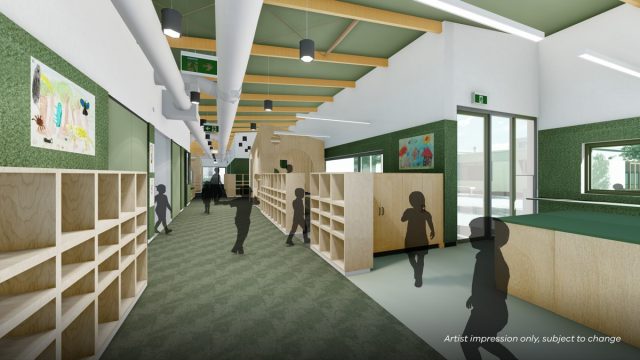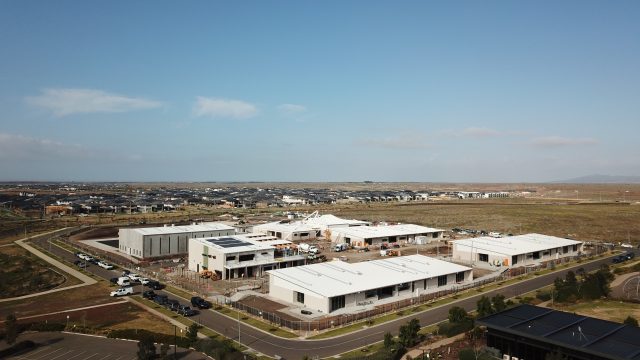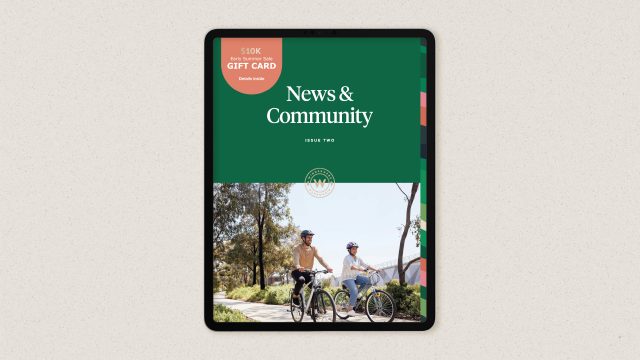With more than 50 hectares of sprawling parklands, wetlands and a natural creek reserve, residents are now enjoying an active lifestyle at Windermere. The first stage of our wetlands and waterways recently opened for our growing community to appreciate and interact with nature.
According to Simon Wade, Director at GbLA Landscape Architects, the design philosophy while working within the boundaries of the site was driven by an intent to enhance the ecological qualities of the local area, while also collecting and purifying stormwater gathered from the surrounding area.
“Thousands of local provenance plants and numerous plant species from different vegetation classes found in the local volcanic plains bio-region were introduced. Improved environmental outcomes are underpinned by the stormwater system designed to collect and purify stormwater, while also providing flood protection for residents at Windermere.
“An important consideration involved the integration of the landscape with the local community, enabling residents to connect with nature via the use of walking and cycle paths and a viewing platform overlooking the wetlands as well as a 70m long pedestrian boardwalk that crosses the wetlands for up-close viewing. Exercise stations have also been added to promote a healthy lifestyle,” added Simon.
What is unique to this site is the basaltic geology of the Mambourin area, developed over many thousands of years from volcanic lava flows across Victoria’s Volvanic Plains and the flora that has evolved and thrived in this landscape.
Views from the site looking west, provide an important link to the You Yangs that are of great importance to the Wadawurrung, Traditional Owners of the land.
Simon says wetlands thrive with a relatively consistent water source, good soil and warm temperatures. They rapidly grow in ideal conditions and often look completely grown within 12 to 18 months of initial installation with Windermere Estate’s wetlands reaching maturity later this year.
“Wetlands provide several important environmental and social benefits. Some include purifying stormwater collected within urban catchments, flood protection for communities, valuable habitat for local fauna, opportunities for people to engage with nature and the potential for water extraction for other uses in the community.”
Plant species used in Windermere are based around native vegetation from the Western Victorian Volcanic Plain region with landscaping mainly comprising scattered trees with a grassy understorey. These plants withstand hot, dry summers and cold winter frosts.
“Over 236,600 thousand plants have been grown with over 168,000 installed and a further 68,600 to be installed within the next three months. More than 131 endangered Werribee Blue Box trees have also been planted within the wetland and waterway,” added Simon.
Visit the sales gallery today at 275 Greens Road, Mambourin to discuss land and home and land package opportunities.

